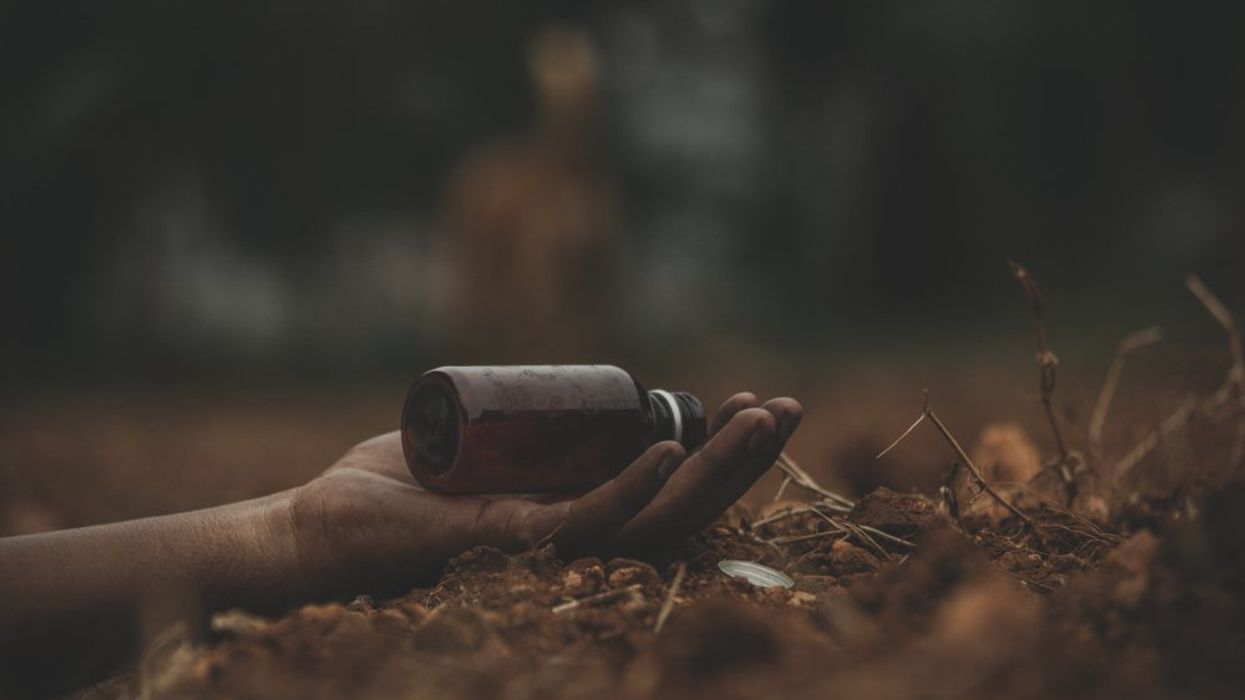The analysis, published Thursday in the US Centers for Disease Control and Prevention's Morbidity and Mortality Weekly Report, looked at what the National Poison Data System categorized as "suspected suicides" by self-poisoning for 2021 among people ages 10 to 19; the records included both suicide attempts and deaths by suicide.
The data showed that attempted suicides and suicides by poisoning increased 30 percent in 2021 compared with 2019, before the pandemic began.
Younger children, ages 10 to 12, had the biggest increase at 73 percent. For 13- to 15-year-olds, there was a 48.8 percent increase in suspected suicides and attempts by poisoning from 2019 to 2021. Girls seemed to be the most affected, with a 36.8 percent increase in suspected suicides and attempts by poisoning.
"I think the group that really surprised us was the 10- to 12-year-old age group, where we saw a 73 percent increase, and I can tell you that from my clinical practice, this is what we're seeing also," said study co-author Dr. Chris Holstege, professor of emergency medicine and pediatrics chief at the University of Virginia School of Medicine. "We're seeing very young ages ages that I didn't used to see attempting suicide by poisoning.
"It was pretty stunning from our perspective," he said.
Twenty or so years ago, when he started working at the University of Virginia, he said, they rarely treated anyone ages 9 to 12 for suicide by poisoning. Now, it's every week.
"This is an aberration that's fairly new in our practice," Holstege said.
Common medications
The records showed that many of the children used medicines that would be commonly found around the house, including acetaminophen, ibuprofen and diphenhydramine, which is sold under brand names including Benadryl.
There was a 71 percent jump from 2019 to 2021 in attempts at suicide using acetaminophen alone, Holstege said.
The choice of over-the-counter medications is concerning because children typically have easy access to these products, and they often come in large quantities.
Holstege encourages caregivers to keep all medications in lock boxes, even the seemingly innocuous over-the-counter ones.
If a child overdoses on something like acetaminophen or diphenhydramine, Holstege encourages parents to bring their children into the hospital without delay, because the toxicity of the drug worsens over time. It's also a good idea to call a poison center, a confidential resource that is available around the clock.
"We want to make sure that the children are taken care of in regards to their mental health but also in regards to the poisoning if there's suspicion that they took an overdose," he said.
Pandemic exacerbated problems
There were limitations to the data used in the new study. It captured only the number of families or institutions that reached out to the poison control line; it cannot account for those who attempted suicide by means other than poison. It also can't capture exactly how many children or families sought help from somewhere other than poison control, so the increase in suspected suicides could be higher.
The American Academy of Pediatrics has noted that the Covid-19 pandemic exacerbated existing mental health struggles that existed even. In 2021, the group called child and adolescent mental health a "national emergency." Emergency room clinicians across the country have also said they've seen record numbers of children with mental health crises, including attempts at suicide.
In 2020, suicide was the second leading cause of death among children ages 10 to 14 and the third leading cause among those 15 to 24, according to the CDC.
Although the height of the pandemic is over, kids are still emotionally vulnerable, experts warn. Previous attempts at suicide have been found to be the "strongest predictor of subsequent death by suicide," the study said.
"An urgent need exists to strengthen programs focused on identifying and supporting persons at risk for suicide, especially young persons," the study said.
Research has shown that there is a significant shortage of trained professionals and treatment facilities that can address the number of children who need better mental health care. In August, the Biden administration announced a plan to make it easier for millions of kids to get access to mental and physical health services at school.
At home, experts said, families should constantly check in with children to see how they are doing emotionally. Caregivers also need to make sure they restrict access to "lethal means," like keeping medicines — even over-the-counter items — away from children and keeping guns locked up.
Connecting kids to care
Dr. Aron Janssen, vice chair of clinical affairs at the Pritzker Department of Psychiatry and Behavioral Health at Lurie Children's in Chicago, said he is not surprised to see the increase in suspected suicides, "but it doesn't make it any less sad."
Janssen, who did not work on the new report, called the increase "alarming."
The rates of suicide attempts among kids had been increasing even prior to the pandemic, he said, "but this shows Covid really supercharged this as a phenomenon.
"We see a lot of kids who lost access to social supports increasingly isolated and really struggling to manage through day to day."
Janssen said that he and his colleagues believe these suspected suicides coincide with increased rates of depression and anxiety and a sense of real dread about the future.
One of the biggest concerns is that "previous suicide attempts is the biggest predictor of later suicide completion," he said. "We really want to follow these kids over time to better understand how to support them, to make sure that we're doing everything within our power to help steer them away from future attempts."
Janssen said it's important to keep in mind that the vast majority of children survived even the worst of the pandemic and did quite well. There are treatments that work, and kids who can get connected to the appropriate care — including talk therapy and, in some cases, medication — can and do get better.
"We do see that. We do see improvement. We do see efficacy of our care," Janssen said. "We just have to figure out how we can connect kids to care."
The-CNN-Wire
™ & © 2023 Cable News Network, Inc., a Warner Bros. Discovery Company. All rights reserved.

















































